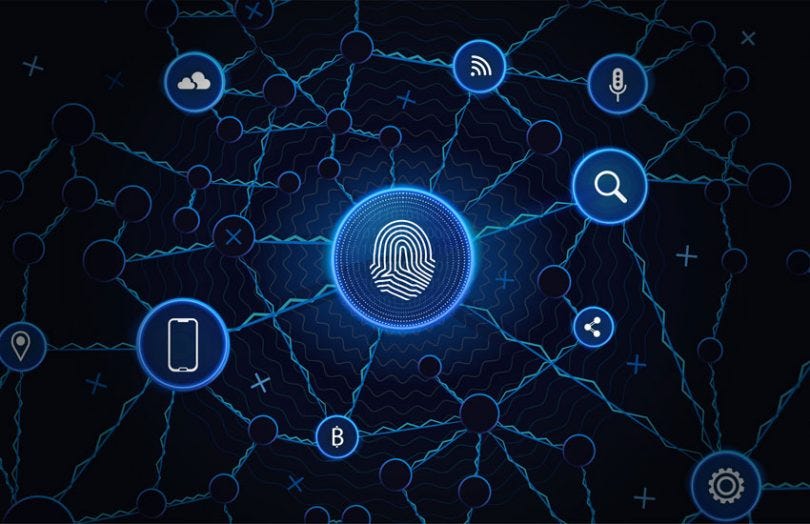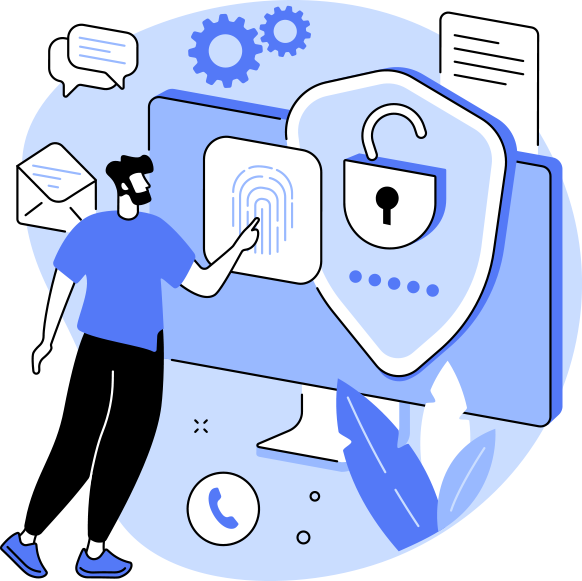The Top Trio of Cryptocurrencies Catching the Eye of Wise Investors
Managing our identities online is more crucial than ever in today's digital age. However, traditional methods often rely on centralized control and vulnerable password systems. This raises concerns about security, privacy, and user control over personal information. Blockchain technology is a solution with its core principles of decentralization, immutability, and transparency. Integrating blockchain with identity management can create a more secure, user-centric, and efficient system for verifying and managing our digital identities. This approach promises to revolutionize how we interact online, empowering users and enhancing trust in the digital world.

What is IAM?
IAM stands for Identity and Access Management. It’s a framework of policies and technologies that ensures the right users can access resources within a system. IAM controls who can access what is within a computer network, application, database, or other resource. IAM is a crucial component of cybersecurity, ensuring that only authorized users can access the information and resources needed to do their jobs. Here’s a breakdown of IAM’s key aspects:
Benefits:
- Enhanced Security: IAM helps prevent unauthorized access to sensitive data and systems by managing user identities and access permissions.
- Improved Compliance: IAM helps organizations comply with data privacy regulations like GDPR (General Data Protection Regulation) by ensuring proper user control over their information.
- Increased Efficiency: Streamlined user provisioning, de-provisioning, gement save time and resources for IT teams.
- Reduced Risk: IAM mitigates the risk of security breaches by limiting access based on user roles and needs.
Components of IAM:
- Authentication: Verifying a user’s identity through usernames, passwords, multi-factor authentication (MFA), or biometrics.
- Authorization: Granting specific permissions to users based on their roles or attributes. This determines what actions a user can take within a system.
- Access Management: Provisioning and revoking resource access based on user needs and authorization levels.
Traditional IAM vs. Modern IAM:

Traditional IAM: Often relies on centralized control, usernames/passwords, and role-based access control (RBAC). This approach can be rigid and have security vulnerabilities. Traditional identity management (IAM) relies on centralized systems to control access to resources like computer networks, applications, and data. Here’s a breakdown of its core features:
- Centralized Control: A single entity, like a company’s IT department or a government agency, manages user identities and access privileges. This creates a single point of failure and vulnerability if compromised.
- Username and Passwords: The most common method for user authentication involves usernames and passwords stored on a central server. This approach is susceptible to breaches and hacking.
- Role-Based Access Control (RBAC): RBAC grants access permissions based on a user’s role within an organization. For example, a finance department employee might have access to financial data, while a sales department employee wouldn’t. This simplifies administration but can be inflexible for complex permission structures.
- Directory Services: Active Directory or LDAP stores user information and access rights. IT staff often manage these directories, adding another layer of complexity.
Limitations of Traditional IAM:
- Security Risks: Centralized storage of credentials makes them vulnerable to hacking and data breaches.
- Scalability Challenges: Managing user identities and access becomes cumbersome as organizations grow.
- Limited User Control: Users have little control over their own identity data and who can access it.
- Inflexibility: RBAC can be complex to manage for granular access needs or frequent permission changes.
While traditional IAM offers a basic framework for access control, it struggles to meet the demands of modern IT environments with growing security concerns, user privacy requirements, and the need for more dynamic and user-centric identity management solutions.

Modern IAM: Incorporates decentralized identity management, single sign-on (SSO), and adaptive authentication to provide more secure, user-centric, and scalable access control. Blockchain technology can potentially revolutionize identity management by offering a more secure, user-centric approach. Here’s how this integration works:
- Digital Identities: Imagine a secure digital wallet on your phone or computer. This wallet stores your unique identity on a blockchain network. Unlike traditional usernames stored on a central server, your blockchain identity is decentralized, meaning any single entity does not control it.
- Issuing Credentials: Trusted organizations like governments, universities, or employers can issue verifiable credentials to your digital wallet. These credentials could be diplomas, passports, licenses, or any other document that needs verification. Each credential is linked to your blockchain identity using cryptography, ensuring it’s tamper-proof and can’t be forged.
- Selective Disclosure: You have complete control over what information you share from your credentials. Smart contracts, which are self-executing programs on the blockchain, can be used to manage this disclosure. For example, when applying for a job, you could share only the education credentials relevant to the position, keeping other information private.
- Verification: Anyone can verify the authenticity of your credentials using the blockchain. All issued credentials are recorded on a public ledger, allowing anyone to see if a credential is real and hasn’t been tampered with. This eliminates the need to rely on third-party verification services and reduces the risk of fraud.
Blockchain’s Advantages in Identity Management:
Blockchain technology offers a compelling alternative to traditional identity management. By distributing identity data across a network of computers, blockchain eliminates the central point of vulnerability found in traditional systems, significantly enhancing security. Furthermore, individuals gain greater control over their data through digital wallets, allowing them to share information selectively. The tamper-proof nature of the blockchain ensures a permanent and verifiable record while also improving accessibility for those who lack traditional documentation. This shift towards a decentralized identity framework unlocks many benefits, including faster verification processes, increased financial inclusion, and improved efficiency.
Challenges and Considerations:
- Scalability: Accommodating many users on a blockchain network can be challenging.
- Regulation: Clear regulations are needed to govern the use of blockchain for identity management.
- Standardization: Standardized protocols are necessary for interoperability between different blockchain systems.

While blockchain integration with identity management is still evolving, its potential to revolutionize how we handle our digital identities is undeniable. This technology offers a powerful combination of security, user control, and accessibility, addressing the limitations of traditional centralized systems. By leveraging decentralization, tamper-proof records, and selective disclosure, blockchain can foster a more secure and trustworthy online environment for everyone. As the technology matures and regulations are established, we can expect even wider adoption of blockchain-based identity management, empowering users and unlocking new possibilities for secure and efficient online interactions.
Decentralized Control, Enhanced Security: IAM Meets Blockchain was originally published in Coinmonks on Medium, where people are continuing the conversation by highlighting and responding to this story.
